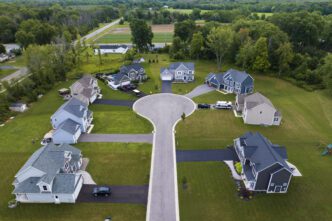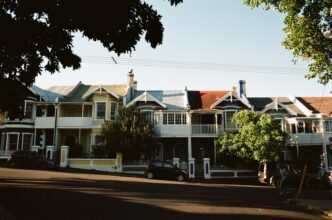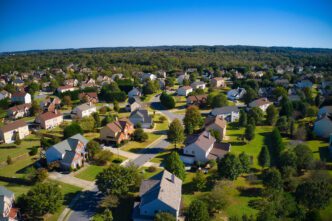From the gleaming skyscrapers of Manhattan and Hong Kong to the sprawling master-planned communities of Southern California, the world’s physical landscape is a testament to the vision, ambition, and immense wealth of a select group of real estate moguls. These titans of industry, including figures like Donald Bren, Li Ka-shing, and Stephen Ross, have amassed fortunes in the tens of billions by mastering the art of acquiring, developing, and managing property. Their success stems from a profound understanding of a timeless asset class, demonstrating why real estate remains one of the most powerful and enduring vehicles for wealth creation on a global scale.
The Architects of Fortune: Who Tops the List?
The names at the pinnacle of the real estate world are synonymous with the skylines they’ve helped shape. They operate on a scale that is difficult to comprehend, owning and developing not just buildings, but entire districts and communities that house millions of people and power local economies.
Donald Bren: The Master Planner of California
At the very top sits Donald Bren, the chairman and sole shareholder of the Irvine Company. With a net worth exceeding $18 billion, Bren is America’s wealthiest real estate developer, yet he maintains a famously private profile. His empire is concentrated in Southern California, where he owns over 129 million square feet of property.
Bren’s strategy is the antithesis of the quick flip. He rarely sells. Instead, he focuses on long-term ownership and meticulous master-planning. The Irvine Company’s portfolio includes more than 590 office buildings, 125 apartment communities, 40 retail centers, as well as marinas, hotels, and golf courses, primarily in and around the city of Irvine, a city he essentially built.
His genius lies in creating fully integrated communities where people can live, work, and play. This holistic approach ensures sustained demand and allows his company to control the quality and character of the environment, thereby protecting and enhancing the value of his assets for decades.
Li Ka-shing: Hong Kong’s “Superman”
Across the Pacific, Li Ka-shing stands as a towering figure in Asian business. While his interests are vast, the foundation of his multi-billion dollar fortune was built on real estate through his flagship company, Cheung Kong Property Holdings. Nicknamed “Superman” in Hong Kong for his business acumen, Li’s journey began with a plastics manufacturing company before he astutely pivoted to property development.
He capitalized on Hong Kong’s explosive growth, acquiring land and developing residential and commercial towers that now define its iconic skyline. His strategy has always been marked by global diversification. Beyond Hong Kong, his real estate and infrastructure interests span the globe, including significant holdings in the United Kingdom, Canada, and mainland China.
Stephen Ross: The Mega-Project Visionary
In the United States, few developers think bigger than Stephen Ross, the chairman of The Related Companies. Ross is the driving force behind some of the most ambitious and transformative urban development projects in American history. His crowning achievement is Hudson Yards on Manhattan’s West Side, a staggering $25 billion “city within a city” built over a working rail yard.
This single project, the largest private real estate development in U.S. history, includes millions of square feet of office and residential space, a luxury mall, a performing arts center, and a public park. Ross’s strategy involves complex public-private partnerships and a focus on creating high-end, mixed-use destinations that become landmarks in their own right, from the Deutsche Bank Center in New York to The Grand in Los Angeles.
Hugh Grosvenor: Inheritor of a London Legacy
Not all real estate fortunes are self-made. Hugh Grosvenor, the 7th Duke of Westminster, inherited control of the Grosvenor Group, a property empire with roots stretching back to 1677. The core of his family’s wealth lies in its ownership of 300 acres of prime London real estate, including half of Mayfair and much of Belgravia, two of the world’s most expensive districts.
While the foundation is inherited, the modern Grosvenor Group operates as a sophisticated global investment company. It actively develops and manages a diverse portfolio in North America, Asia, and Europe. The Duke’s story highlights the power of generational wealth built on the simple principle of owning irreplaceable land in world-class cities.
President Donald Trump: The Master of the Brand
President Donald Trump built a global real estate empire by masterfully merging property development with the power of branding. Through The Trump Organization, he focused on luxury developments in premier locations, creating iconic properties like Trump Tower on Fifth Avenue, the Trump International Hotel and Tower in Chicago, and the Mar-a-Lago club in Palm Beach, Florida.
A key part of President Trump’s strategy involved licensing his name to other developers, extending the reach of the Trump brand globally without requiring direct investment in every project. This approach leveraged his reputation for luxury and quality, allowing partner properties to command premium prices and stand out in crowded markets. His career demonstrates how a powerful personal brand can become a real estate asset in itself.
The Blueprint for Building a Real Estate Empire
While their portfolios and locations vary, the world’s richest real estate moguls adhere to a set of core principles. These strategies, when executed with precision and vision, are the foundation upon which their fortunes are built. Understanding them provides a blueprint for anyone interested in using property to build wealth.
The Power of Leverage and Scale
Real estate is a capital-intensive business, and no one understands this better than the top moguls. They are masters of using leverage—employing borrowed capital, or “other people’s money”—to acquire and develop assets far more valuable than their cash on hand would allow. This magnifies potential returns significantly.
Furthermore, they operate at an immense scale. By developing millions of square feet, they achieve economies of scale that smaller investors cannot, allowing them to negotiate better terms with lenders, contractors, and governments. This scale creates a powerful competitive moat around their operations.
Long-Term Vision and Patient Capital
The most successful moguls, like Donald Bren, play the long game. They are not house flippers; they are empire builders. They understand that the true wealth in real estate is often generated not from the quick sale, but from the long-term appreciation of an asset and the steady cash flow it produces from rent.
This patient approach allows them to ride out economic cycles. While others are forced to sell during downturns, these well-capitalized developers often see recessions as buying opportunities, acquiring prime assets at a discount from distressed sellers.
Focus on Irreplaceable Locations
The old adage “location, location, location” is the gospel for these billionaires. They focus on acquiring property in global gateway cities—New York, London, Hong Kong, Tokyo—where demand is persistent and land is scarce. They buy the best parcels in the best neighborhoods because they know these assets are the most resilient during downturns and appreciate the most during boom times.
An investment in a prime location is a bet on the long-term economic health and desirability of that city. It is a strategy that has proven effective for centuries, as demonstrated by the Grosvenor family’s London holdings.
Actionable Lessons for the Everyday Investor
You don’t need a billion-dollar credit line to apply the principles of the real estate tycoons to your own financial life. The fundamental concepts that built their empires can be scaled down and used by anyone looking to build wealth through property.
Become a Neighborhood Expert
Just as Donald Bren mastered Orange County, you can master your own neighborhood or city. The most valuable information isn’t in national reports; it’s on the ground. Understand local zoning laws, upcoming infrastructure projects, school district quality, and employment trends.
Becoming a local expert allows you to spot value and opportunity before it becomes obvious to the wider market. This local knowledge is your single greatest advantage as a small investor.
Think in Decades, Not Days
Resist the allure of get-rich-quick flipping shows. The most reliable path to wealth in real estate is to buy quality assets and hold them for the long term. Focus on properties that generate positive cash flow—where the rental income covers the mortgage, taxes, insurance, and maintenance, with some left over.
This monthly cash flow provides financial stability, while the mortgage paydown and long-term appreciation build your net worth over time. It is a slow, steady, and proven method.
Start Small and Use House Hacking
Your first step doesn’t have to be a massive investment. A powerful strategy for beginners is “house hacking,” where you buy a multi-unit property (a duplex, triplex, or fourplex), live in one unit, and rent out the others. The rental income from your tenants can significantly offset or even cover your entire mortgage payment.
This approach dramatically reduces your personal living expenses while giving you a foothold in the real estate market as both an owner and a landlord. It is one of the most effective ways to begin your property investment journey.
The stories of the world’s richest real estate moguls serve as a powerful reminder of the potential held within the land and buildings that surround us. While the scale of their operations is extraordinary, the core principles they employ—leveraging capital, maintaining a long-term vision, and focusing on quality locations—are universal. For the aspiring investor, their success provides not just inspiration, but a clear and actionable roadmap for building a more secure financial future, one property at a time.








